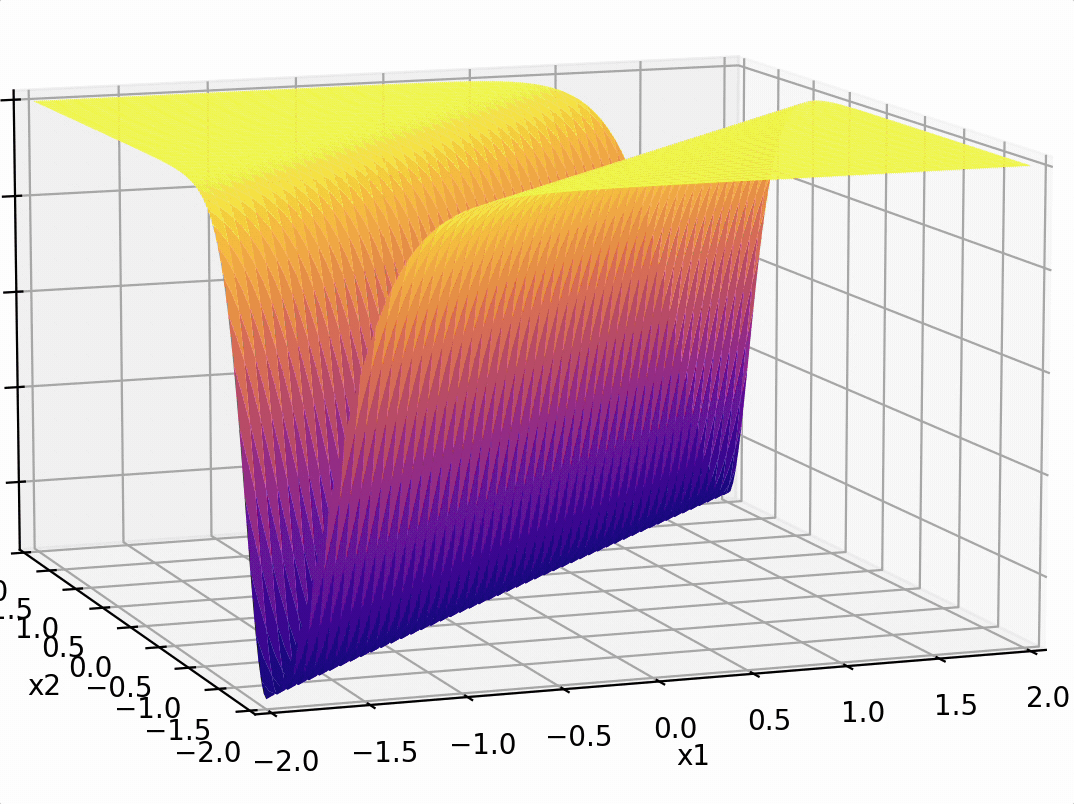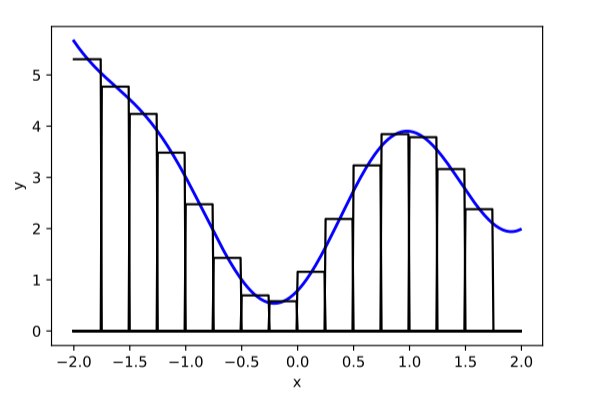

Lecture 6: Neural Networks II
Shen Shen
March 7, 2025
11am, Room 10-250
Intro to Machine Learning

Outline
- Recap: Multi-layer perceptrons, expressiveness
- Forward pass (to use/evaluate)
-
Backward pass (to learn parameters/weights)
- Back-propagation: (gradient descent & the chain rule)
- Practical gradient issues and remedies
Outline
- Recap: Multi-layer perceptrons, expressiveness
- Forward pass (to use/evaluate)
- Backward pass (to learn parameters/weights)
- Back-propagation: (gradient descent & the chain rule)
- Practical gradient issues and remedies
A neuron:
\(w\): what the algorithm learns
- \(x\): input (a single datapoint)
- \(a\): post-activation output
- \(f\): activation function
- \(w\): weights (i.e. parameters)
- \(z\): pre-activation output
\(f\): what we engineers choose
\(z\): scalar
\(a\): scalar
Choose activation \(f(z)=z\)
learnable parameters (weights)
e.g. linear regressor represented as a computation graph
neuron
Choose activation \(f(z)=\sigma(z)\)
learnable parameters (weights)
e.g. linear logistic classifier represented as a computation graph
neuron
A layer:
learnable weights
A layer:
- (# of neurons) = (layer's output dimension).
- typically, all neurons in one layer use the same activation \(f\) (if not, uglier algebra).
- typically fully connected, where all \(x_i\) are connected to all \(z^j,\) meaning each \(x_i\) influences every \(a^j\) eventually.
- typically, no "cross-wiring", meaning e.g. \(z^1\) won't affect \(a^2.\) (the output layer may be an exception if softmax is used.)
layer
linear combo
activations
A (fully-connected, feed-forward) neural network
layer
input
neuron
learnable weights
We choose:
- # of layers
- # of neurons in each layer
- activation \(f\) in each layer
hidden
output
(aka, multi-layer perceptrons MLP)



\(-3(\sigma_1 +\sigma_2)\)
recall this example
\(f =\sigma(\cdot)\)
\(f(\cdot) \) identity function
Recall



\(-3(\sigma_1 +\sigma_2)\)
Outline
- Recap: Multi-layer perceptrons, expressiveness
- Forward pass (to use/evaluate)
- Backward pass (to learn parameters/weights)
- Back-propagation: (gradient descent & the chain rule)
- Practical gradient issues and remedies
- Activation \(f\) is chosen as the identity function
- Evaluate the loss \(\mathcal{L} = (g^{(i)}-y^{(i)})^2\)
- Repeat for each data point, average the sum of \(n\) individual losses
e.g. forward-pass of a linear regressor
- Activation \(f\) is chosen as the sigmoid function
- Evaluate the loss \(\mathcal{L} = - [y^{(i)} \log g^{(i)}+\left(1-y^{(i)}\right) \log \left(1-g^{(i)}\right)]\)
- Repeat for each data point, average the sum of \(n\) individual losses
e.g. forward-pass of a linear logistic classifier
\(\dots\)
Forward pass: evaluate, given the current parameters
- the model outputs \(g^{(i)}\) =
- the loss incurred on the current data \(\mathcal{L}(g^{(i)}, y^{(i)})\)
- the training error \(J = \frac{1}{n} \sum_{i=1}^{n}\mathcal{L}(g^{(i)}, y^{(i)})\)
linear combination
loss function
(nonlinear) activation
compositions of ReLU(s) can be quite expressive


in fact, asymptotically, can approximate any function!

image credit: Phillip Isola
Recall:
Outline
- Recap: Multi-layer perceptrons, expressiveness
- Forward pass (to use/evaluate)
-
Backward pass (to learn parameters/weights)
- Back-propagation: (gradient descent & the chain rule)
- Practical gradient issues and remedies
stochastic gradient descent to learn a linear regressor
- Randomly pick a data point \((x^{(i)}, y^{(i)})\)
- Evaluate the gradient \(\nabla_{w} \mathcal{L(g^{(i)},y^{(i)})}\)
- Update the weights \(w \leftarrow w - \eta \nabla_w \mathcal{L(g^{(i)},y^{(i)}})\)

for simplicity, say the dataset has only one data point \((x,y)\)

example on black-board
- default choice in hidden layers
- very simple function form, so is the gradient.

Recall:
now, slightly more interesting activation:

example on black-board
- Randomly pick a data point \((x^{(i)}, y^{(i)})\)
- Evaluate the gradient \(\nabla_{W^2} \mathcal{L(g^{(i)},y^{(i)})}\)
- Update the weights \(W^2 \leftarrow W^2 - \eta \nabla_{W^2} \mathcal{L(g^{(i)},y^{(i)}})\)
\(\dots\)

\(\nabla_{W^2} \mathcal{L(g^{(i)},y^{(i)})}\)
Backward pass: run SGD to update all parameters
- e.g. to update \(W^2\)
\(\dots\)

\(\nabla_{W^2} \mathcal{L(g,y)}\)
Backward pass: run SGD to update all parameters
- e.g. to update \(W^2\)
Evaluate the gradient \(\nabla_{W^2} \mathcal{L(g,y)}\)
Update the weights \(W^2 \leftarrow W^2 - \eta \nabla_{W^2} \mathcal{L(g,y})\)
\(\dots\)
how to find
?

\(\nabla_{W^1} \mathcal{L(g,y)}\)
Now, how to update \(W^1?\)
\(\dots\)
Evaluate the gradient \(\nabla_{W^1} \mathcal{L(g,y)}\)
Update the weights \(W^1 \leftarrow W^1 - \eta \nabla_{W^1} \mathcal{L(g,y})\)
\(\dots\)
how to find
?
Previously, we found
\(\dots\)
how to find
Now
\(\dots\)
back propagation: reuse of computation
\(\dots\)
back propagation: reuse of computation
Outline
- Recap: Multi-layer perceptrons, expressiveness
- Forward pass (to use/evaluate)
-
Backward pass (to learn parameters/weights)
- Back-propagation: (gradient descent & the chain rule)
- Practical gradient issues and remedies
Let's revisit this:

example on black-board
now, slightly more complex network:
example on black-board
now, slightly more complex network:
example on black-board
if \(z^2 > 0\) and \(z_1^1 < 0\), some weights (grayed-out ones) won't get updated
now, slightly more complex network:
example on black-board
if \(z^2 < 0\), no weights get updated

- Width: # of neurons in layers
- Depth: # of layers
- Typically, increasing either the width or depth (with non-linear activation) makes the model more expressive, but it also increases the risk of overfitting.
However, in the realm of neural networks, the precise nature of this relationship remains an active area of research—for example, phenomena like the double-descent curve and scaling laws
- To combat vanishing gradient is another reason networks are typically wide.
- Still have vanishing gradient tendency if the network is deep.
Recall:
Residual (skip) connection :
example on black-board
Now, \(g= a^1 + \text{ReLU}(z^2),\)
even if \(z^2 < 0\), with skip connection, weights in earlier layers can still get updated
Summary
- We saw that multi-layer perceptrons are a way to automatically find good features/transformations for us!
- In fact, roughly speaking, can asymptotically learn anything (universal approximation theorem).
- How to learn? Still just (stochastic) gradient descent!
- Thanks to the layered structure, turns out we can reuse lots of computation in gradient descent update -- back propagation.
- Practically, there can be numerical gradient issues. There're remedies, e.g. via having lots of neurons, or, via residual connections.
Thanks!
We'd love to hear your thoughts.
6.390 IntroML (Spring25) - Lecture 6 Neural Networks II
By Shen Shen
6.390 IntroML (Spring25) - Lecture 6 Neural Networks II
- 350



